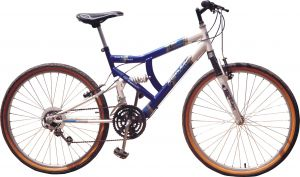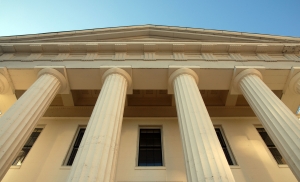The beautiful climate is one of the many factors that make Northern California a great place to call home. It also means that bicycling can be a great transportation option that saves money, is friendly to the environment and has terrific health benefits. Unfortunately, this also creates the danger of Oakland bicycle accidents. Cyclists and drivers share the responsibility for making the roads safe for all residents and helping to avoid Oakland traffic accidents.
 According to The Oakland Tribune, an accident claimed a life of a cyclist on Sunday night at the intersection of Bancroft and 78th Avenues. The unidentified fifty-one year old cyclist was travelling southbound on 78th when he was hit by an SUV that was backing up in the eastbound lanes. It is unclear whether the Dodge Durango was exiting a driveway or was reversing for another reason. The forty-five year old driver, who remained at the scene of the accident, is from Oakland but his name has not been released. The bicycle rider was taken to a hospital but died from his injuries. Alcohol does not appear to have been involved in the incident.
According to The Oakland Tribune, an accident claimed a life of a cyclist on Sunday night at the intersection of Bancroft and 78th Avenues. The unidentified fifty-one year old cyclist was travelling southbound on 78th when he was hit by an SUV that was backing up in the eastbound lanes. It is unclear whether the Dodge Durango was exiting a driveway or was reversing for another reason. The forty-five year old driver, who remained at the scene of the accident, is from Oakland but his name has not been released. The bicycle rider was taken to a hospital but died from his injuries. Alcohol does not appear to have been involved in the incident.
Statistics compiled by the National Highway Traffic Safety Administration found 630 cyclist fatalities occurred nationwide in 2009. This represented two percent of all motor vehicle fatalities. The report also found that 51,000 rider were injured in motor vehicle traffic crashes in 2009. This number may be low since it only takes into account reported incidents. Accidents in California accounted for ninety-nine of the 2009 cyclist fatalities, making California the state with the second highest number of bicycle rider deaths. Across the nation, seventy percent of all fatal bicycle crashes occurred in urban areas and seventy-two percent of incidents occurred between 4 A.M. and 8 P.M.
 San Francisco Injury Lawyer Blog
San Francisco Injury Lawyer Blog













 Bicyclists are everywhere in our city. Unfortunately, that means that bike accidents occur here at higher rates than in many other parts of the country. As
Bicyclists are everywhere in our city. Unfortunately, that means that bike accidents occur here at higher rates than in many other parts of the country. As 
 Lately, there has been a lot of buzz around GM’s bounce back from the brink of death and the future of its Chevy Volt. This year the focus has shifted somewhat to the fruits borne by research and development departments of companies like Volvo and Google. Both recently showed off innovations that take some off the pressure of drivers, hopefully increasing safety on the roads.
Lately, there has been a lot of buzz around GM’s bounce back from the brink of death and the future of its Chevy Volt. This year the focus has shifted somewhat to the fruits borne by research and development departments of companies like Volvo and Google. Both recently showed off innovations that take some off the pressure of drivers, hopefully increasing safety on the roads. A class action lawsuit is a type of litigation where a large number of people with a common interest in a matter sue or are sued as a group. This type of legal action provides a convenient way to resolve disputes between large numbers of individuals with similar interests in one case.
A class action lawsuit is a type of litigation where a large number of people with a common interest in a matter sue or are sued as a group. This type of legal action provides a convenient way to resolve disputes between large numbers of individuals with similar interests in one case.  CitiApartments, owned by the Lembi family, will be facing yet another lawsuit according to
CitiApartments, owned by the Lembi family, will be facing yet another lawsuit according to  Republican Assemblyman Tim Donnelly recently introduced a bill that he said would nullify the Affordable Care Act in California. Mr. Donnelly said his bill would amend the California Constitution to prohibit federal, state, or local law from forcing a person or business to buy health insurance or impose penalties if the person or business does not do so. The Assemblyman is essentially making the conservative case against this bill, similar to the case being made against it this week in Washington. Mr. Donnelly said, “The underlying principle is that deciding who you want to provide your health care or where you want to buy insurance or pay as you go ought to be left up to the individual. That’s a personal decision.” The conservative justices on the Supreme Court seem to be agreeing with this line of reasoning, although no one will know for sure until the judgment is handed down sometime in June.
Republican Assemblyman Tim Donnelly recently introduced a bill that he said would nullify the Affordable Care Act in California. Mr. Donnelly said his bill would amend the California Constitution to prohibit federal, state, or local law from forcing a person or business to buy health insurance or impose penalties if the person or business does not do so. The Assemblyman is essentially making the conservative case against this bill, similar to the case being made against it this week in Washington. Mr. Donnelly said, “The underlying principle is that deciding who you want to provide your health care or where you want to buy insurance or pay as you go ought to be left up to the individual. That’s a personal decision.” The conservative justices on the Supreme Court seem to be agreeing with this line of reasoning, although no one will know for sure until the judgment is handed down sometime in June.